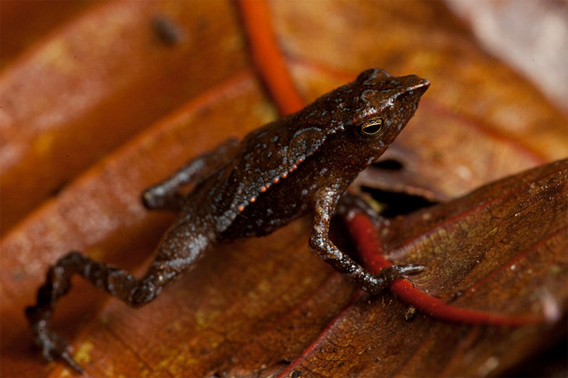
New species of beaked toad, genus Rhinella, found in the rainforests of Chocó department of Colombia, during the “Search for Lost Frogs”. This individual, around 2cm in length, is thought to skip the tadpole stage, hatching directly into toadlets from eggs laid on the forest floor. The coloration and shape of the head make the toad resemble the dead leaves on which it lives. © Robin Moore/iLCP
Three previously undocumented species of frog have been discovered in Colombia, reports Conservation International.
The new species were discovered during an expedition to search for the Mesopotamia beaked toad, an amphibian which hasn’t been seen in nearly a century. The expedition, which included researchers from Conservation International (CI), the IUCN Amphibian Specialist Group (ASG), Global Wildlife Conservation (GWC) and Fundación ProAves, came under the “Search for Lost Frogs” program, an initiative seeking out species of amphibians thought to be extinct.
Robin Moore, a herpetologist with Conservation International and one of the leaders of the expedition, said that while the team failed to find the Mesopotamia beaked toad, the discoveries were a highlight of the trip, which took scientists to forests ranging from lowland rainforest to cloud forest in the Colombian departments of Chocó and Antioquia.
“After spending several days searching for the Mesopotamia beaked toad with no success, the team’s spirits were pretty low, but finding these new species, including a new beaked toad, was like a shot of adrenaline,” said Moore.
The newly discovered species include a cryptic beaked toad (Rhinella species), which resembles dead leaves and whose offspring skip the tadpole stage to develop directly into toadlets; an unknown toad with bright red eyes; and a new rocket frog (Silverstoneia species), a type of poison dart frog.
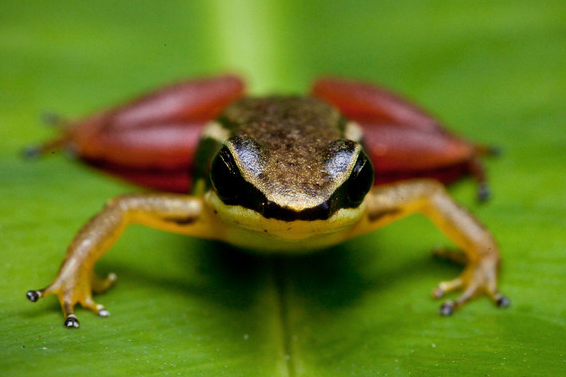
New species of rocket frog, from the genus Silverstoneia, found during the “Search for Lost Frogs” in the rainforests of the Chocó department in Colombia. A type of poison dart frog – a group that has given rise to many chemicals found to be useful to humans – this species is less poisonous than its brightly colored relatives. Living in and around streams, the rocket frogs carefully carry newly hatched tadpoles on their backs to deposit them in water to complete their development. This is a small species, which probably does not grow larger than 3cm in total length. © Robin Moore/iLCP
Moore said the new beaked toad resembles the character C. Montgomery Burns, better known as Mr. Burns, from The Simpsons TV show.
George Meyer, a writer and producer of The Simpsons, agreed.
“The toad’s imperious profile and squinty eyes indeed look like Monty Burns,” he said in a statement.
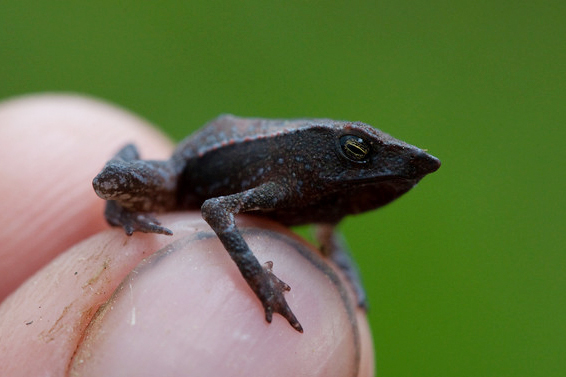
New species of beaked toad, genus Rhinella, found in the rainforests of Chocó department of Colombia, during the “Search for Lost Frogs”. This individual, around 2cm in length, is thought to skip the tadpole stage, hatching directly into toadlets from eggs laid on the forest floor. The coloration and shape of the head make the toad resemble the dead leaves on which it lives. © Robin Moore/iLCP
The researchers also highlighted the unusual eyes of the unknown toad.
“I have never seen a toad with such vibrant red eyes,” said Moore. “This trait is highly unusual for amphibians, and its discovery offers us a terrific opportunity to learn more about how and why it adapted this way.”
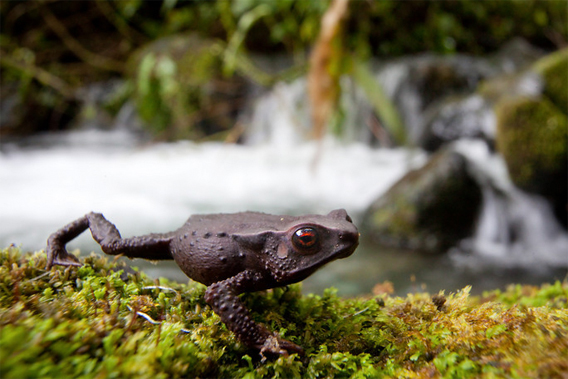
New toad species with striking red eyes found during the “Search for Lost Frogs” in the cloudforests of Chocó, Colombia. This highly unusual species has scientists baffled – we know nothing about this species other than where it lives. © Robin Moore/iLCP
Colombia’s Chocó has some of the highest levels of biodiversity ever recorded. Conflict in the region over the past 30 years mean that much of its forests have been spared, whereas in neighboring Ecuador most of the Chocó forest has been cut down for agriculture. But relative stability in recent years mean cattle ranches and industrial agriculture is fast expanding in the region, putting its biological bounty at risk.
Related articles
Stunning toxic frog protected as a result of drug trafficking conflict
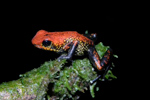
(09/29/2010) A spectacular poison dart frog on the edge of extinction in the wild has been afforded temporary protection by warring drug gangs in Colombia’s Chocó region, reports ProAves. The La Brea Poison Frog (Oophaga occultator), a colorful species only documented by scientists in 1975, has suffered from unsustainable collection for the pet trade, severe deforestation for coca cultivation, and aerial spraying for coca eradication, resulting in a substantial population decline. But the species has clung to life in a deforested landscape along the Saija River in Colombian Pacific coast in part due to conflict between three armed groups which has kept collectors out of the area.
Photos: ‘Lost amphibian’ search makes good: three ‘extinct’ species rediscovered
(09/22/2010) A search for 100 of the world’s ‘lost amphibians’—unseen for decades and in many cases supposed extinct—have turned up three species so far, one of which hasn’t been recorded since the Nazis were bombing London. The lost amphibian expeditions, formed by Conservation International (CI) and the IUCN Amphibian Specialist Group (ASG), have found surviving populations of the cave splayfoot salamander (Chiropterotriton Mosaueri) in Mexico, the Mount Nimba reed frog (Hyperolius Nimbae) in the Ivory Coast, and the Omaniundu reed frog (Hyperolius sankuruensis) from the Democratic Republic of Congo.
Stunning monkey discovered in the Colombian Amazon
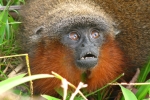
(08/11/2010) While the Amazon is being whittled away on all sides by logging, agriculture, roads, cattle ranching, mining, oil and gas exploration, today’s announcement of a new monkey species proves that the world’s greatest tropical rainforest still has many surprises to reveal. Scientists with the National University of Colombia and support from Conservation International (CI) have announced the discovery of a new monkey in the journal Primate Conservation on the Colombian border with Peru and Ecuador. The new species is a titi monkey, dubbed the Caquetá titi ( Callicebus caquetensis). However, the announcement comes with deep concern as researchers say it is likely the new species is already Critically Endangered due to a small population living in an area undergoing rapid deforestation for agriculture.
Photos: world’s top ten ‘lost frogs’

(08/09/2010) The International Union for the Conservation of Nature (IUCN) and Conservation International (CI) have sent teams of researchers to 14 countries on five continents to search for the world’s lost frogs. These are amphibian species that have not been seen for years—in some cases even up to a century—but may still survive in the wild. Amphibians worldwide are currently undergoing an extinction crisis. While amphibians struggle to survive against habitat loss, climate change, pollution, and overexploitation, they are also being wiped out by a fungal disease known as chytridiomycosis.

(11/03/2009) Reducing Emissions from Deforestation and Degradation (REDD), a climate change mechanism proposed by the U.N., has been widely lauded for its potential to simultaneously deliver a variety of benefits at multiple scales. But serious questions remain, especially in regard to local communities. Will they benefit from REDD? While much lip-service is paid to community involvement in REDD projects, many developers approach local communities as an afterthought. Priorities lie in measuring the carbon sequestered in a forest area, lining up financing, and making marketing arrangements, rather than working out what local people — the ones who are often cutting down trees — actually need in order to keep forests standing. This sets the stage for conflict, which reduces the likelihood that a project will successfully reduce deforestation for the 15-30 year life of a forest carbon project. Brodie Ferguson, a Stanford University-trained anthropologist whose work has focused on forced displacement of rural communities in conflict regions in Colombia, understands this well. Ferguson is working to establish a REDD project in an unlikely place: Colombia’s Chocó, a region of diverse coastal ecosystems with some of the highest levels of endemism in the world that until just a few years ago was the domain of anti-government guerillas and right-wing death squads.